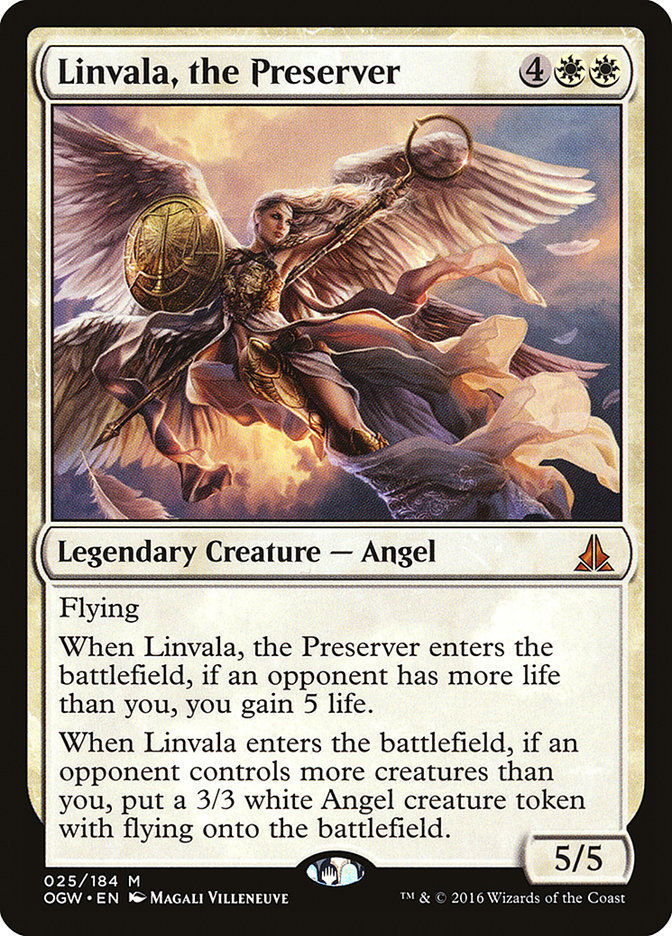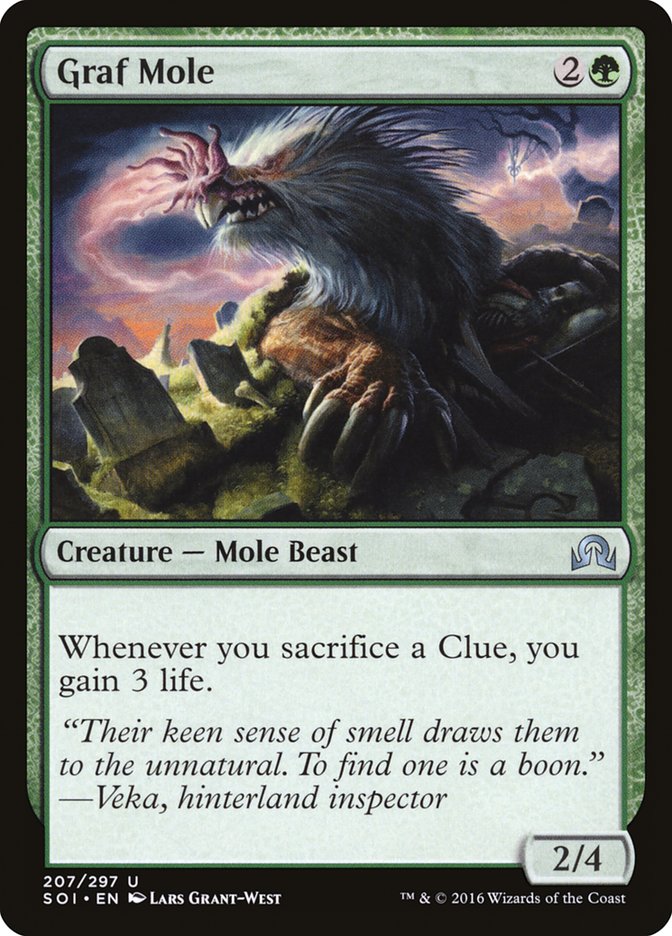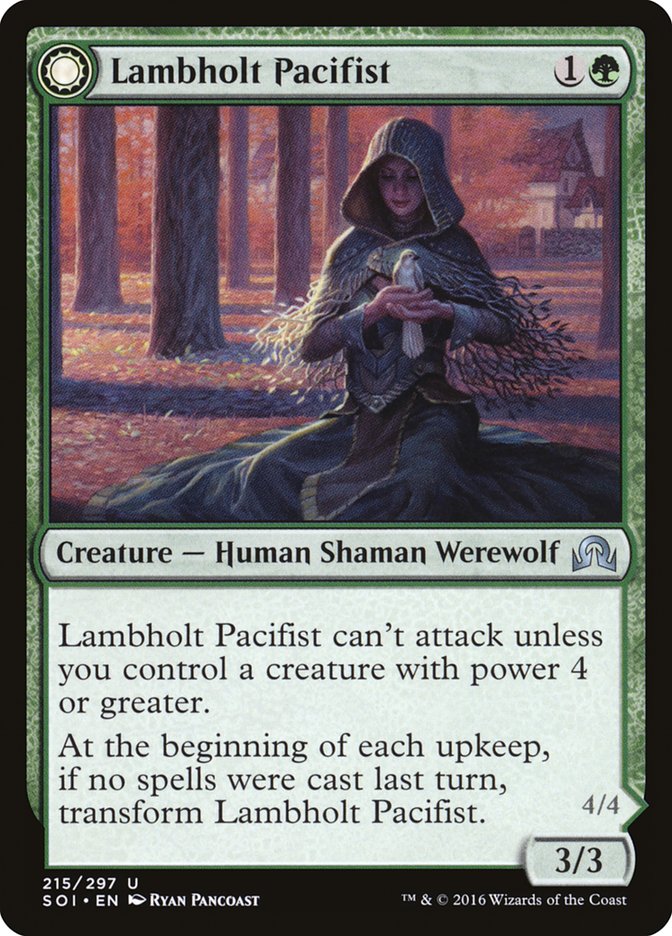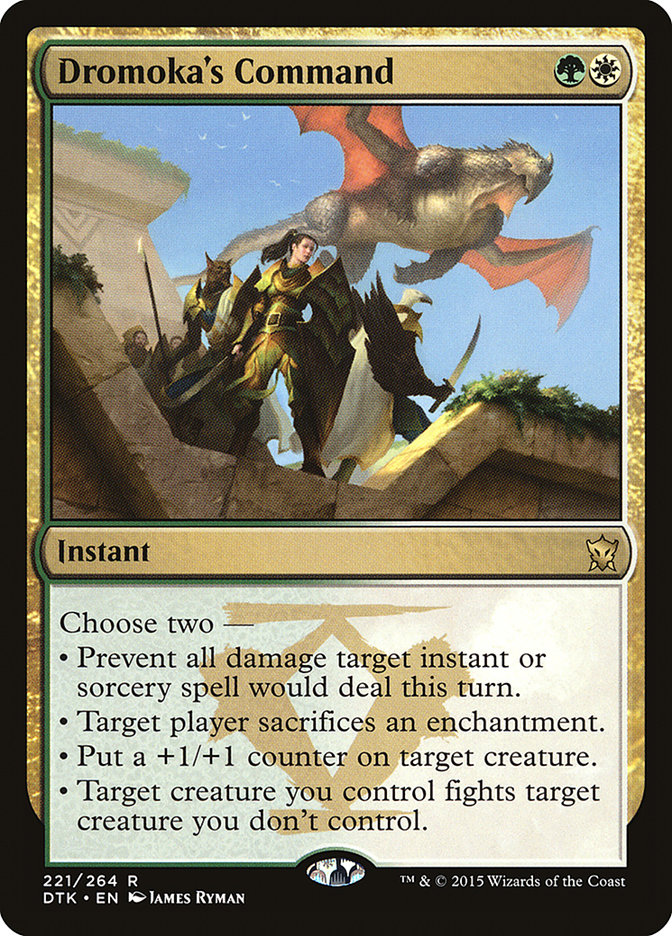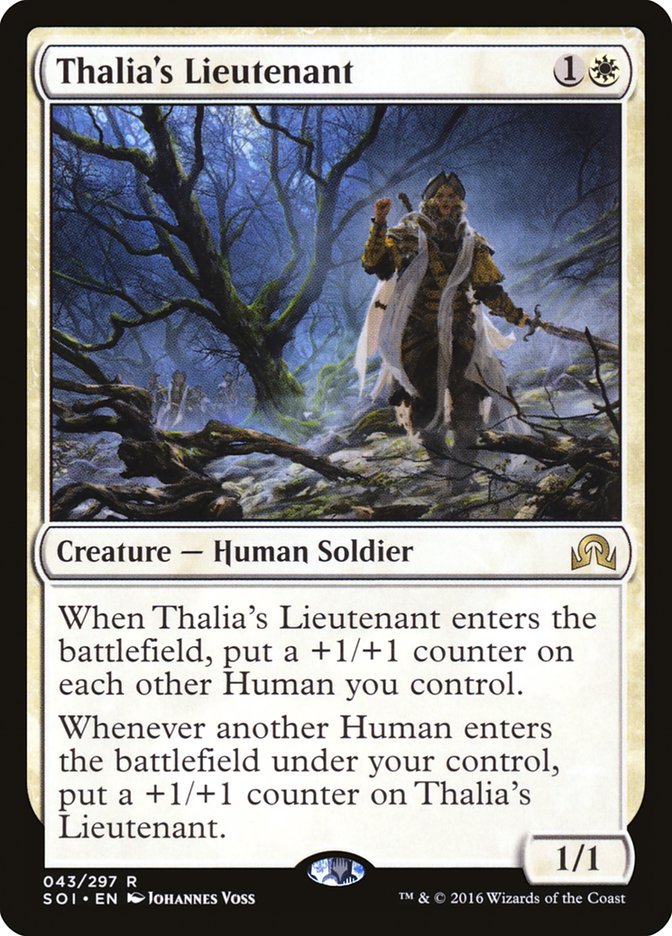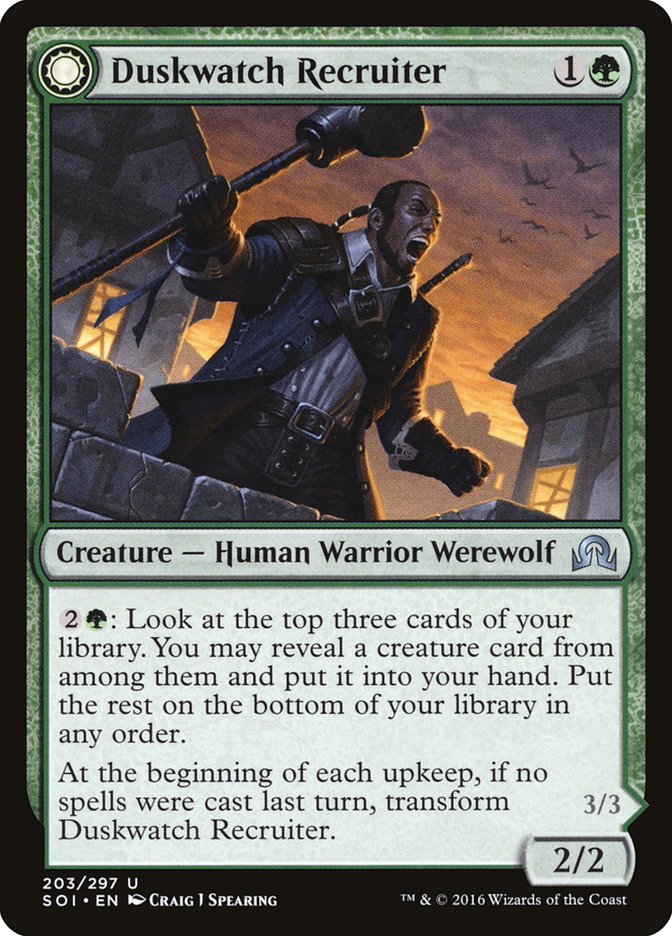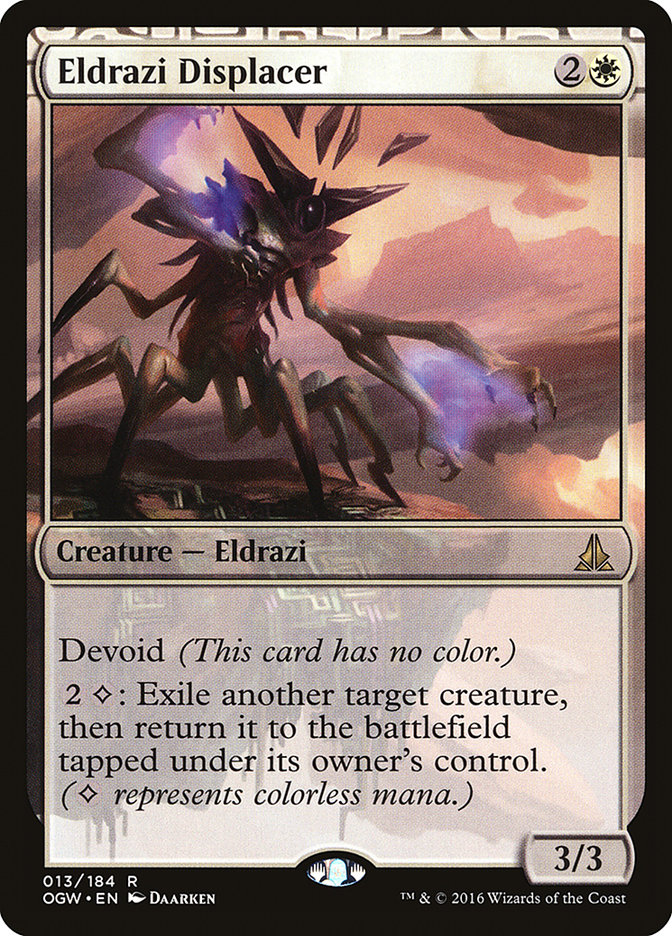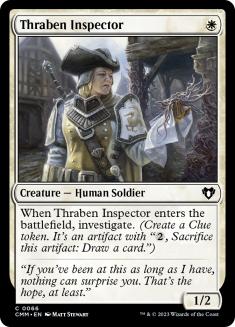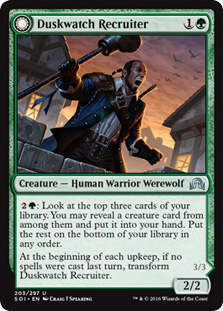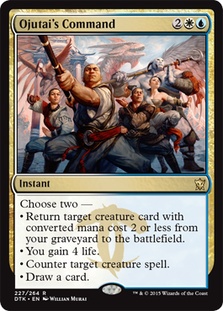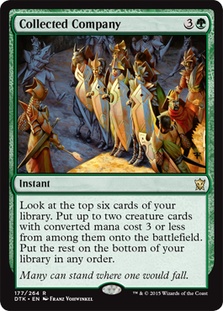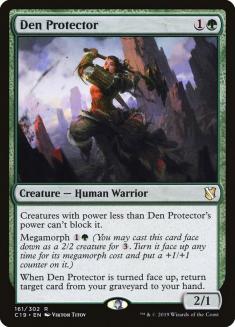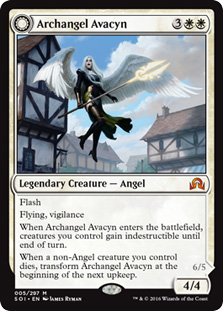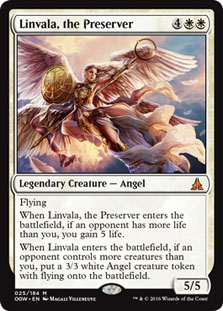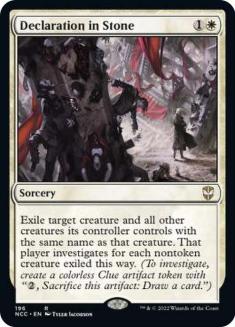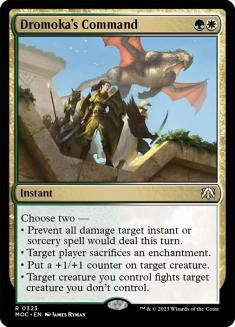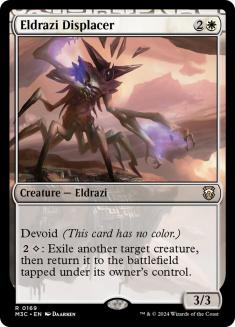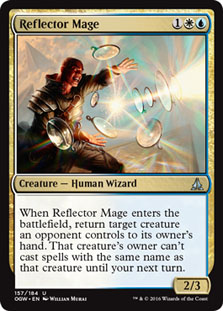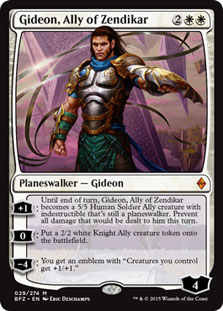I got second place at #SCGATL playing Bant Humans a week ago. It was my third SCG Open Top 8 of the year, and the finish has propelled me to sixth place on the SCG Tour® Leaderboard.
Standard has been a bit of a mystery for me since Shadows over Innistrad was released. This was my first Standard tournament since the Season One Invitational in Columbus seven weeks before. Since then I have had Modern Opens and a Sealed RPTQ, so it wasn’t until the Monday before #SCGATL that I looked into what happened to Standard in the month and a half prior.
After looking at the results from different Grand Prix and Magic Online, it became apparent that Standard was a wide-open format with lots to explore. Different archetypes were being tweaked and tuned week after week for specific matchups, matchups that I had no clue about. With very little knowledge of the format, I knew I was going to be at a disadvantage heading into the event, so I felt like I needed to attack the format from a different angle. For example, I crossed off G/W Tokens as an option immediately because I knew my opponents were going to know their matchup with the deck much better than I would.
My goal was to find a deck that was linear, extremely powerful, and could prey on all of the various types of midrange decks that were blossoming. I knew exactly where to look.
Creatures (12)
Planeswalkers (3)
Lands (25)
Spells (20)

Josh Dickerson has quietly had an amazing Season Two on the SCG Tour®, highlighted by his Open win in Columbus with G/R Ramp. He destroyed many midrange decks on his way to the title, and a big reason for that was his willingness to go against the grain of conventional wisdom and play the full four copies of Ulamog, the Ceaseless Hunger. Every other Ramp decklist I have seen has played between one and three of the terrifying Eldrazi, but I loved Josh’s plan of playing four of the best creature in Standard. Ulamog, the Ceaseless Hunger wins games on the spot when it is cast, and I happened to be in the market for winning games.
So after making a few small tweaks, most notably adding four Deathcap Cultivator to speed the deck up a tad, it was off to my testing grounds on Magic Online. At this point, with very little testing time before the Open, I was almost positive I would be playing some form of G/R Ramp and would use the testing time to learn about the various matchups and how I wanted to sideboard against them.
After the first two competitive Leagues the deck felt pretty good; I went 4-1 in both of them. Both of my losses were to a R/W Humans deck that felt unwinnable, but I was able to go over the top of many different types of control decks. I was comfortable throwing away one matchup to have a good matchup against the rest of the field.
Then came my third League, on the Wednesday before SCGATL. In Round 1 I was paired against Brian Braun-Duin playing a Bant Humans deck that I was not very familiar with, and he steamrolled me before I could get anything going. I noted how powerful his deck looked and started my second match. I was paired against Bant Humans, with the same result as Round 1. Round 3: Bant Humans again, and I died quickly again.
I had to go look up this deck! I wasn’t coming close to beating them.
Creatures (26)
- 4 Reflector Mage
- 3 Eldrazi Displacer
- 3 Thraben Inspector
- 4 Thalia's Lieutenant
- 4 Tireless Tracker
- 4 Lambholt Pacifist
- 4 Duskwatch Recruiter
Lands (20)
Spells (9)

Immediately after looking at Andrew’s decklist, I knew that I was going to play it in Atlanta. The main difference between this deck and Jim Davis’s Bant Company deck from the beginning of the format is that Bant Humans is much more aggressive, and I would still have a linear, extremely powerful deck that could prey on the midrange decks of the format. I would just be going under them instead of over the top. I only had time to play three games on Magic Online Thursday night before flying out to Atlanta, but the deck seemed straightforward enough, so this is what I registered for #SCGATL.
Creatures (26)
- 4 Reflector Mage
- 3 Eldrazi Displacer
- 3 Thraben Inspector
- 4 Thalia's Lieutenant
- 4 Tireless Tracker
- 4 Lambholt Pacifist
- 4 Duskwatch Recruiter
Lands (25)
Spells (9)

I played 73 of Andrew’s 75 cards. My only concern was my matchup against aggressive decks that were faster than mine. To my surprise, Gerry Thompson said he was not too big of a fan of Archangel Avacyn or Gideon, Ally of Zendikar in the deck. I had no previous testing with either card, so I decided I would shave one of each for two Linvala, the Preserver, which can be a repeatable source of lifegain with Eldrazi Displacer.
It’s about 2 AM. I’m about to submit my deck and doze off. Tom Ross has just submitted his deck and is ready to call it a night.
“Hey, Tom, is there any other creature in Standard that I can use for repeatable lifegain?”
“I don’t know. There’s Graf Mole.”
He was answering the question factually, and not exactly suggesting the card, but I was instantly intrigued. I had just spent weeks playing an obscene number of Sealed Leagues on Magic Online in preparation for the RPTQ the weekend before. Graf Mole is an all-star in Shadows over Innistrad Sealed. Graf Mole sounded like a fine creature to Collected Company into at the time, so I added one to the deck, submitted, and went to sleep.
When the tournament began, I was quickly reminded about how vastly underprepared I was. I had no sideboard plans and did not know what my opponents were doing, but this turned out to be a blessing in disguise.
Each round, I was under the assumption that my opponents were going to be playing powerful threats each turn and I had no room for error. I had to maximize the pressure I could mount each and every turn, as I had no room to take turns off. This led me to play extremely efficiently and accrue small advantages over my opponents, which turned into victories.
When you are comfortable with a deck and its matchups, it is easy to “autopilot” the first few turns of the game without having a real plan. This is a trap that I have had to fight myself out of in the past. In January, I made the Top 8 of two of the largest SCG Opens ever with Naya Company in Modern. Shortly after that, I played in an SCG Regionals event with the deck, as confident as ever. Instead of analyzing every turn, I was just playing some cards from my hand because I was so used to playing the deck and so sure I was going to win. I did not last long in that tournament, and it taught me a valuable lesson that being overconfident will not help you win matches.
So during #SCGATL, I made sure to maximize each turn because I was uncomfortable with the Standard format as a whole. I was much more focused on finding the fastest way to end each game than normal, which led me to win more games than normal. I think this is a great lesson that most players can learn: games are decided by who wins them first and not by who gets the most card advantage.
Not surprisingly, I was very happy with Bant Humans and believe it is one of the best decks in the format. It is an aggressive deck with creatures that can grow to be absolutely huge and dominate a battlefield, and it has card advantage engines that allow the deck to have a great late-game. In these terms, it is actually very similar to Naya Company in Modern, and after a few rounds, I felt very comfortable piloting the deck. For those of you unfamiliar with the deck, I would like to talk about some of the individual cards.
Lambholt Pacifist is very quietly one of the best cards in the deck. It is always the best creature to play on turn 2 and can be turned into a 4/4 the following turn with the help of Thalia’s Lieutenant and Dromoka’s Command. Lambholt Pacifist is basically an Anafenza, the Foremost that only costs two mana, and that Anafenza dominated Standard the last two years.
Thalia’s Lieutenant allows Bant Humans to go over the top of other midrange creature decks and is frequently the card that you want to see when you cast Collected Company. The Lieutenant is powerful enough that the deck moves away from Sylvan Advocate, which is one of the best green cards in Standard.
Duskwatch Recruiter and Tireless Tracker are powerful card advantage engines that are good enough to see play in non-rotating formats and conveniently happen to be Humans.
The only non-Human creature of the deck is Eldrazi Displacer, but the power level of the card is so high that I can’t imagine playing the deck without it. Any job, from transforming a Profane Prince to exiling a token to flickering your own Reflector Mage, Eldrazi Displacer can get it done.
Sideboarding with Bant Humans was easily the hardest part of playing the deck all weekend. I did not have a plan set in stone for any deck, and I mostly played it by ear. My sideboard was filled with cards that did not play well with Collected Company, or Thalia’s Lieutenant, which made sideboarding even more difficult. I’m positive that I did not have the best sideboarding strategies, but I’m going to mention how I did sideboard against the two most popular decks I faced. I went up against G/W Tokens and B/W Control in nine of my thirteen Swiss rounds, going a combined 8-1 versus the two decks.
G/W Tokens
Out:
In:
I played against G/W Tokens six times throughout the Swiss rounds, and this is how I was sideboarding by the last two. The games are slugfests with both players adding threat after threat to the battlefield, and I never felt like I had time to activate Duskwatch Recruiter. I shaved a Collected Company in matchups where I was cutting four or more creatures and adding in Archangel Avacyn, with the justification that Archangel Avacyn had a similar power level and a much higher floor.
The one round I did lose to G/W Tokens was against Emma Handy in Round 10, and Linvala, the Preserver was a game-changer for her, which led me to sideboard in my Linvala in Rounds 14 and 15 against that deck.
B/W Control
Out:
In:
I believe a lot of people would instantly sideboard out all four Dromoka’s Commands in this matchup, but I like leaving two in. Having a removal spell for Kalitas, Traitor of Ghet can be critical, and the same thing can be said for clearing out an Ally token in order to kill a Gideon, Ally of Zendikar. Lambholt Pacifist and Thalia’s Lieutenant often have four toughness, and Dromoka’s Command can save them from a Languish or Grasp of Darkness.
Gideon, Ally of Zendikar is in the sideboard to fight against Languish decks. If you are playing against a deck with Languish, bring him in. Thraben Inspector is decent in this matchup, but I wasn’t comfortable taking out too many Reflector Mages or Eldrazi Displacers and would leave in a 2/2 split of them.
I did not face another deck more than once, and I was mixing and matching my deck to face what I had seen from my opponents. In my Top 8 match against Austin Meadows playing Bant Rite, I lost a very lengthy Game 1 and proceeded to sideboard out ten cards, including all four Collected Company. I honestly didn’t know exactly what I wanted to do in the matchup, so I brought in everything except the Negates, the Graf Mole, and one Den Protector. I ended up winning Games 2 and 3, but I would not recommend such a drastic sideboard plan in the future.
Lambholt Pascifist and Thalia’s Lieutenant were the only cards that I did not sideboard out in the entire tournament, and Tireless Tracker was a card I shaved at least one of against everything except control decks. Unfortunately, the Graf Mole was completely unnecessary, and the only game I sideboarded it in was Game 2 of the finals against Tom Ross, and he Gryff’s Booned over the Mole with ease.
My last tip with the deck is to cast Collected Company in the main phase. Thalia’s Lieutenant and Reflector Mage are cards that you want to play pre-combat, and the same goes for when they enter the battlefield off a Collected Company. The only exceptions to this are when you need to play around a battlefield sweeper from your opponent or if you do not have creatures that will be able to attack profitably.
During your next tournament, really try to maximize each turn with the goal of ending the game as soon as possible. This is what I focused on at SCGATL, and I was rewarded with a deep run into the Top 8, even though I was unfamiliar with the format. Avoid the trap of running familiar games on “autopilot” and you too should see some better results with more focused play.




